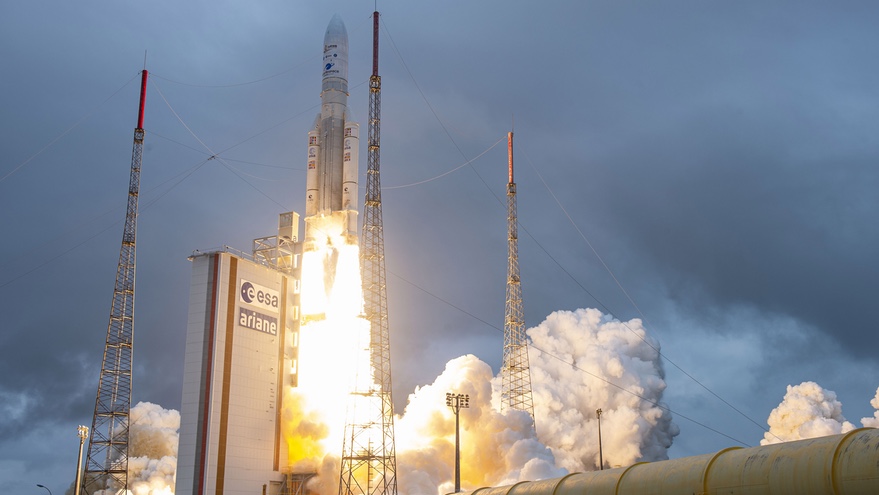Now on its sixth iteration, Samsung’s Galaxy Z Fold remains the best big-screen folding smartphone you can get.
But aside from some spec boosts and an AI injection, the Fold6 is extraordinarily similar to last year’s Fold5 despite a significant boost in price, giving the impression that Samsung has reached the limits of what it can do with the form factor for now.
To be clear, the Fold6 remains a marvel of engineering. The device is phenomenally thin at less than 6 millimetres, so even when it’s folded up it isn’t too bulky.
It features cutting-edge processors and displays while also feeling very stable when opening and closing. It’s just that this is the third year in a row we’ve seen virtually the same thing with slight improvements across the board, which is tough to square with the new asking price of $2750.
A familiar Fold
There have been some important improvements to the design, slight though they may be. The wider cover display makes the unopened device feel almost like a regular smartphone rather than a digital bookmark, meaning you’ll only open it up when you actually need that big square internal display. It’s noticeably lighter than the previous models, and now has an IP48 rating, meaning it’s been tested against both dust and water ingress.
But elsewhere there are long-standing niggles begging to be addressed. I’d love there to be S-Pen storage on this device without having to get a specific case, and relying on a side-mounted fingerprint scanner rather than an under-display one feels old-fashioned. Battery life and cameras, as far as I can tell, are the same as they’ve been since 2022. And, while I’m fully aware that not everybody cares about this, the two-stage camera bump makes the phone awful to use when laid flat on a desktop.

In its tucked-up form, the Fold is more useable than ever.
Grumbles notwithstanding, if you’re not expecting a revolution over last year’s device and you’re happy to pay twice the price of many flagship phones, there’s a lot to love about the Fold6. I really like its understated look, with no branding on the metal back and clean straight edges. Like the S24 Ultra, there are some very sharp corners, but they don’t dig into the hands in this case as they’re only on the hinged edge.
Both displays are sharp and bright LTPO OLEDs with 120Hz refresh rates making them great for browsing, media and games, while the new Snapdragon 8 Gen 3 chip provides enough grunt for hardcore multitasking. One element of the hardware package that does feel a bit lacking though is the camera setup. Selfie-wise there’s an OK camera on the cover screen and a sub-par one embedded in the big internal screen, though if you need to you can always open the phone up, flip it around and take a very good selfie with the main camera. But for as solid as general shots are, the main array falls short of high-end 2024 standards with no macro focus and only a 3x optical zoom.

Opened up the phone is just like a small, very thin tablet.
Now with AI
As with the S24 lineup, a big marketing point for the Fold6 is Galaxy AI, which is a series of generative features baked into the phone’s software. I understand that onboard AI which can rewrite messages and mess with photos is table stakes at this point, but at the risk of having an unpopular opinion, I yawned at Galaxy AI on the S24, and I’m yawning again at it now. I simply can’t find reasons to use these features on a day-to-day basis.
Translating text and making very blunt or misspelled messages into something you could send in a professional email might make for impressive AI tricks, but even if I needed that it doesn’t work reliably enough to depend on it. Similarly, being able to move, remove or resize photo elements is starting to lose its novelty and reveal itself as something I don’t really ever need to do.

The Fold6 is compatible with the S-Pen, it just doesn’t have a place to store it.
One AI photos feature I’m using for the first time on the Fold6 is Sketch to Image, where you can draw on top of your photos to add anything you’d like. The system does a pretty good job at recognising crude drawings and inserting (occasionally) realistic elements. It takes account of the surroundings and materials in the original photo, so for example when I tried adding a large dog to a picture of a bouncy castle, it made it look like his paws were sinking into the floor, and included appropriate reflections. Other options made the dog himself inflatable.
But once again, it’s a feature that really only serves to show off a cool thing AI can do; the results are as often disturbing as they are related to what you actually had in mind, and aside from putting crocheted hats on a cat that would never accept them in real life, there’s not much practical use.

As with most AI-generated images this looks alright at first glance. But look closer and you can see some of his fur in the middle of the flower, and a weird bit (a cross between a flower and a cat paw?) coming off the back of the hat.Credit: Tim Biggs
Samsung also has some work to do in presenting the AI features as a core part of the phone’s software, as it currently has Bixby, Google’s Gemini and Galaxy AI features all crammed in there and competing.
Loading
But as far as the software goes generally, this remains a very impressive and usable folding phone experience. If you’re doing something on one screen it tends to expand very logically to the other when you open the device up, and setting up multitasking screens on the big display is seamless. It’s still a bit weird that the internal display is practically square but will give you totally different layouts and options for portrait and landscape orientations, but that’s more of an Android thing than a Samsung thing.
Overall, whether you’re using it for work, play or media, the Fold6 is absolutely solid and its extra screen always feels additive versus a traditional phone. But I do feel like the series is overdue for a big update that really makes standard phone users want to switch over.
Get news and reviews on technology, gadgets and gaming in our Technology newsletter every Friday. Sign up here.
Most Viewed in Technology
Loading
Note: This article have been indexed to our site. We do not claim legitimacy, ownership or copyright of any of the content above. To see the article at original source Click Here













